Rare Rides Icons: The History of Kia's Larger and Full-size Sedans (Part VIII)

We return to Kia’s large sedan history today, at a point shortly after the launch of the K7. Kia’s full-size front-drive for the 2010s, the K7 was called Cadenza in all export markets, and was a successor to the unfortunately styled Opirus (Amanti in North America). Kia hired Peter Schreyer from his longtime employment at Volkswagen Group in order to usher in a new stylistic era at Kia.
Though it went on sale for the 2010 model year, Kia wasn’t quite ready to send the Cadenza to the North American market. With the market’s general rejection of the Amanti in mind, Kia called on Schreyer to refresh the Cadenza and lux it up before its North American launch.
Kia made an announcement in January 2013 that it would offer the Cadenza in North America, beginning with the 2014 model year. Before it went on sale, Kia facelifted its large sedan with front and rear clip edits. It was an attempt to add some additional European-type stylistic excitement into the Cadenza, and step away from its rather bland original looks.
The changes consisted mostly of the aforementioned clip edits, as well as a new wheel design. The grille of the 2014 Cadenza took on a mesh grid pattern, in place of the simple chromed horizontal bars of the debut look. The grille was smaller than before, and lower down. It was newly surrounded by plastic at the front clip, which was shaped to look like an extension of the hood. This meant the hood shut line was no longer along the top edge of the grille, but was in the middle of nowhere.
The grille’s shape was enhanced with a more defined Tiger Nose look in its upper and lower indentations, and transitioned from the old version’s shield shape into a more defined trapezoid. In contrast, the lower valance received less detailing: The lower grille grew wider, and sections to either side that contained the fog lamps shrunk.
Said fog lamps were smaller than before, but maintained a similar shape. Fog lamps lost their chrome detailing, as the trim in that area migrated to the lower edge of the separate section that contained the lamp. The trim there was larger than it was before, and took on an aggressive fin shape. Also more aggressive were the headlamps, which retained their exterior shape but were sharper looking inside. HiD lamps were more defined looking than they were previously.
The fin-like valance trim drew the eye to a new multi-spoke wheel design, which doubled the number of wheel spokes from 10 to 20 and looked more up to date. The wheels were one of the only changes along the side of the Cadenza, aside from a trim update to the side mirrors. The lower quarter of the mirrors was previously body colored, but the 2014 update made that portion black.
At the rear the Cadenza got a slightly sharper trunk line shape than before, which matched a mild alteration to the tail lamp design. The revised lamps were of a sharper trapezoid shape, and lacked the curved lower edge that made them look a bit Volkswagen. They were also simpler looking under the lens, as LED lighting arrived. Elsewhere at the rear, a redesigned bumper carried a slimmer chrome trim strip, and added red reflector lenses for visual interest. There was also a revision on the twin exhaust trims, as trapezoids became ovals.
The Cadenza’s interior experienced a notable upgrade with its 2014 refresh, as Kia intended the car to compete in the lower end of the premium market in North America. Gone was the crazy cut-out shield shape on the center stack, replaced by a much more modern floating design. Materials were upgraded, trim was made more substantial to the eye, and wood appeared.
The center stack was dominated by a large color infotainment touch screen. Previously the screen was smaller and had red pixels with basic trip information. Buttons on the center stack were reworked entirely, and looked more upscale and more modern. Gauges were new too; Kia modernized via a large central speedometer with a sweeping needle, like a Mercedes-Benz.
The North American Cadenza (like the Amanti) was meant as a value proposition premium car, and offered (as standard) the sort of equipment that usually cost thousands extra, or was not found in its competition. Kia provided Nappa leather seats as standard on Cadenza, in white, beige, or black. Navigation and the aforementioned flashy wheels were also standard equipment. The leather seats were heated up front, and the driver’s had optional ventilation. Rear outboard seats could also be heated, and rear passengers could optionally experience natural light through a dual-pane sunroof.
All Cadenzas in the North American market used the same 3.3-liter Lambda series V6, the most powerful engine offered in the first generation Cadenza. It produced 290 horsepower, and 255 lb-ft of torque – competitive (but not sporty) at the time. Upon release, the press generally determined the Cadenza was a nice car. However, it wasn’t as mushy and comfortable as something like an Avalon, and wasn’t as sporty as an Acura or as luxurious as a Lexus. Cadenza was firmly in the middle ground – and that wasn’t an advantageous position when the badge on the front didn’t exactly scream “premium sedan.”
With all its standard features, Kia priced the Cadenza more like an Acura TL or Lexus ES than its more similar or softer competition like the Nissan Maxima or Toyota’s Avalon. The lower Limited trim asked $35,900 ($44,859 adj.), while the upmarket Premium was $41,900 ($52,357 adj.).
Unfortunately, the more-for-less proposition the Cadenza offered in 2014 wasn’t one that most customers found appealing. The 2013 launch as a 2014 model year saw 8,626 sales, with a further 9,267 in calendar year 2014. In 2015 that figure dropped to 7,343, and in 2016 it fell again to 4,738.
And if those American figures appeared lackluster, consider those of Canada: Between 2013 and 2016, Canadian Kia dealers sold 694 Cadenzas total. The first generation’s banner year there was 2013, where 195 were sold. Undeterred, Kia was ready with an all new Cadenza for the 2017 model year, which we’ll cover in another installment.
For now, we step back to the turn of the decade once more. In 2010 when the Cadenza was Kia’s brand new sedan, there was another big new Kia in development that was even larger, more expensive, and more luxurious. For the first time since the 2002 Mazda Sentia-sourced Enterprise, Kia prepared to sell a full-size, rear-drive luxury car. It was K900 time.
The new Kia’s basis was sourced from a Hyundai, as one might expect. Hyundai developed a successor to its flagship vehicle a couple of years before, and in 2010 finally introduced its second generation Equus. Hyundai’s first Equus was actually a Mitsubishi design, where Hyundai had some input in its development. The nearly 200-inch long sedan was front-wheel drive, and used a longitudinal V6 or V8 engine. Both Hyundai and Mitsubishi produced the new sedans (and limousines) at their respective plants. While Mitsubishi’s Dignity was a complete flop, Hyundai’s Equus was massively popular, and became the prestige large luxury sedan to have in South Korea. It remained in production from 1999 to 2009.
For 2010 its replacement was the new rear-drive Equus, which was a pure Hyundai design and was sold to minimal success in the North American market from 2010. It was the Equus’ BH-L rear-drive platform which Kia used for its new luxury car, named KH-L in Kia’s usage. It would be the first rear-drive sedan Kia ever sold in North America (their other contemporary rear-drive thing was the oft-forgot Borrego SUV.)
Much like Cadenza, the K900 was designed by Peter Schreyer. It was also penned in in the late 2000s, shortly after the Tiger Nose transformation of the brand. Despite its much different mission, the K900 (above) looked very similar to the Cadenza. We’ll pick up there next time.
[Images: Hyundai, Kia]

Interested in lots of cars and their various historical contexts. Started writing articles for TTAC in late 2016, when my first posts were QOTDs. From there I started a few new series like Rare Rides, Buy/Drive/Burn, Abandoned History, and most recently Rare Rides Icons. Operating from a home base in Cincinnati, Ohio, a relative auto journalist dead zone. Many of my articles are prompted by something I'll see on social media that sparks my interest and causes me to research. Finding articles and information from the early days of the internet and beyond that covers the little details lost to time: trim packages, color and wheel choices, interior fabrics. Beyond those, I'm fascinated by automotive industry experiments, both failures and successes. Lately I've taken an interest in AI, and generating "what if" type images for car models long dead. Reincarnating a modern Toyota Paseo, Lincoln Mark IX, or Isuzu Trooper through a text prompt is fun. Fun to post them on Twitter too, and watch people overreact. To that end, the social media I use most is Twitter, @CoreyLewis86. I also contribute pieces for Forbes Wheels and Forbes Home.
More by Corey Lewis
Latest Car Reviews
Read moreLatest Product Reviews
Read moreRecent Comments
- Probert They already have hybrids, but these won't ever be them as they are built on the modular E-GMP skateboard.
- Justin You guys still looking for that sportbak? I just saw one on the Facebook marketplace in Arizona
- 28-Cars-Later I cannot remember what happens now, but there are whiteblocks in this period which develop a "tick" like sound which indicates they are toast (maybe head gasket?). Ten or so years ago I looked at an '03 or '04 S60 (I forget why) and I brought my Volvo indy along to tell me if it was worth my time - it ticked and that's when I learned this. This XC90 is probably worth about $300 as it sits, not kidding, and it will cost you conservatively $2500 for an engine swap (all the ones I see on car-part.com have north of 130K miles starting at $1,100 and that's not including freight to a shop, shop labor, other internals to do such as timing belt while engine out etc).
- 28-Cars-Later Ford reported it lost $132,000 for each of its 10,000 electric vehicles sold in the first quarter of 2024, according to CNN. The sales were down 20 percent from the first quarter of 2023 and would “drag down earnings for the company overall.”The losses include “hundreds of millions being spent on research and development of the next generation of EVs for Ford. Those investments are years away from paying off.” [if they ever are recouped] Ford is the only major carmaker breaking out EV numbers by themselves. But other marques likely suffer similar losses. https://www.zerohedge.com/political/fords-120000-loss-vehicle-shows-california-ev-goals-are-impossible Given these facts, how did Tesla ever produce anything in volume let alone profit?
- AZFelix Let's forego all of this dilly-dallying with autonomous cars and cut right to the chase and the only real solution.



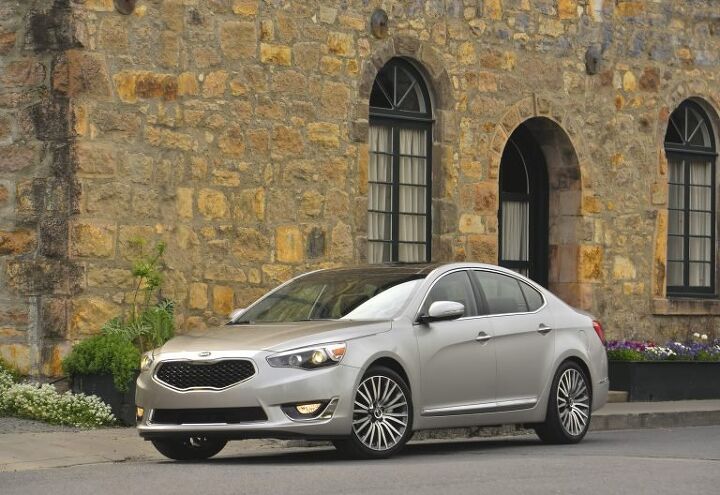






















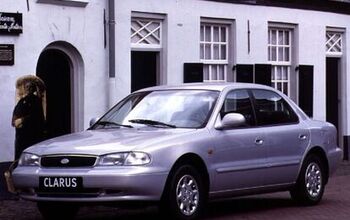
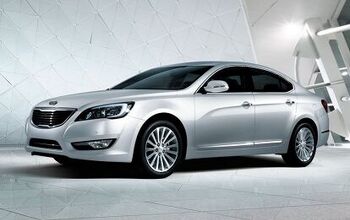
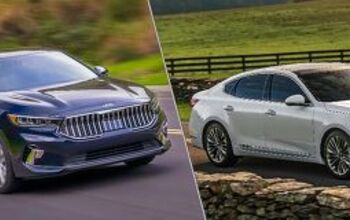
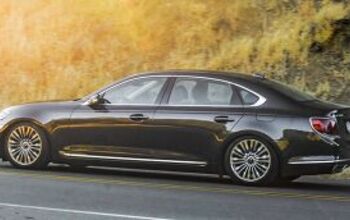
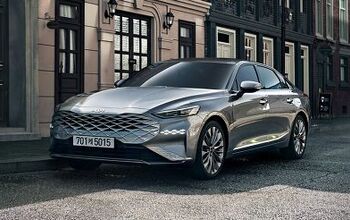










Comments
Join the conversation
Kia replaced the Cadenza/K7 with something more upscale - the K8 which has sold pretty well in Korea. Hyundai is fighting back by making the Grandeur replacement a true FWD, luxury flagship, harkening back to the original FWD Eqqus/Centennial. Things also came full-circle when Mitsubishi brought back the Dignity/Proudia, which were rebadged Nissan Cima/Fuga sedans (since discontinued).
A research paper on Macbeth is one of the requirements a student of literature must recognize for William Shakespeare. Most literary scholars have gone through this assignment at least once in their academic lives. It is an integral part of their academic days. And you have to hand it to them, as Macbeth is studied in a research paper.